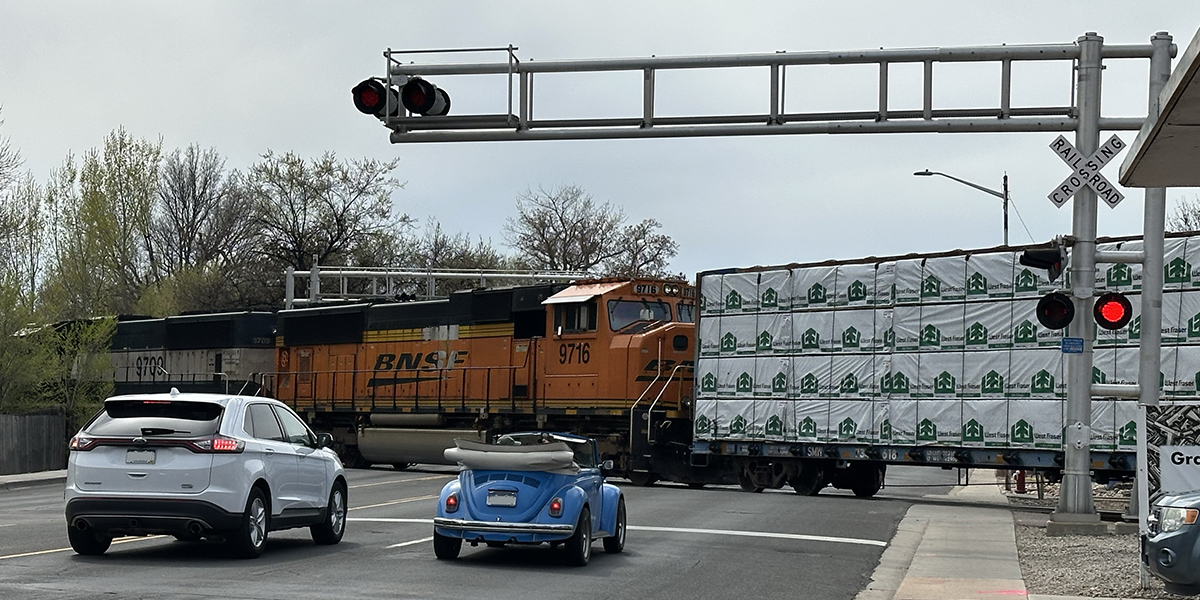
Project Group 1 for the railroad Quiet Zones project includes the four crossings listed below with the improvements. Construction is anticipated to start in May 2025 and is anticipated to be completed by the end of the year. It will include installation of asphalt pavement, concrete curb/gutter/sidewalk, raised medians, pavement markings, signage, fencing and installation of railroad gates with flashers.
Once construction of these crossing is completed, a request will be filed with the Federal Railroad Administration to implement the Quiet Zone. If approved, the Quiet Zone will go into effect. See the project FAQs for more information about Quiet Zones.
Current Status
Updated November 5, 2025.
17th Avenue Crossing
- Construction is substantially complete.
- Additional work on the medians will be required before the Quiet Zone designation. Updates on lane closures will be provided prior to work starting.
9th Avenue Crossing
- Construction will be substantially complete in November.
- From November 5 – 12, there will be only one lane of traffic open in each direction across the railroad tracks. The sidewalk on the north side across the tracks will be closed. The sidewalk on the south side will be open.
- Vehicles should expect delays and slower speeds on 9th Ave. between Martin Street and Collyer Street until construction is completed.
Longs Peak Avenue Crossing
- Safety improvements are complete.
- The intersection at Longs Peak Ave. and Atwood St. is fully open to vehicles and pedestrians.
3rd Avenue Crossing
- Construction is delayed until spring 2026.
- All lanes of traffic are currently open on 3rd Avenue and Atwood Street.
Proposed Improvements
- 3rd Avenue/Atwood Street: Four-quadrant gate (quad gate)
- Longs Peak Avenue: Four-quadrant gate (quad gate)
- 9th Avenue: Two-quadrant gate with median
- 17th Avenue: Two-quadrant gate with median
Schedule
- Phase 1 (May 2025 – Oct 2025): Longs Peak Avenue, 9th Avenue and 17th Avenue
- Phase 2 (Spring 2026): 3rd Avenue
Work Hours
- Regular construction hours are Monday – Friday from 7 am – 5 pm.
- Some work may occur until 7 pm and on Saturdays and Sundays, as necessary.
Questions?
For questions or concerns about the Quiet Zones project, please email QuietZones@longmontcolorado.gov or call 720-526-2044. More information about all four of the project groups can be found by visiting the Railroad Quiet Zones in Longmont webpage.
